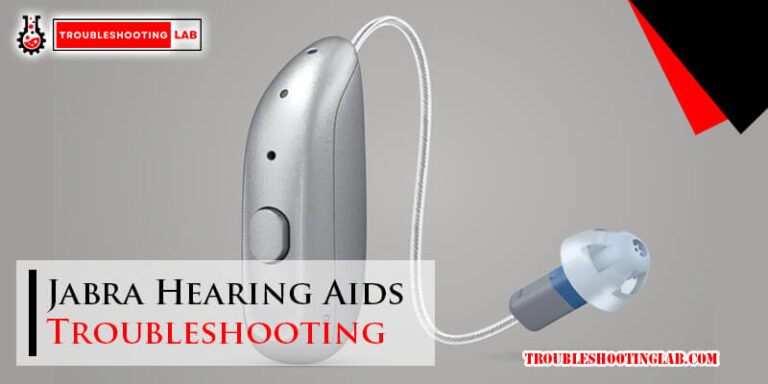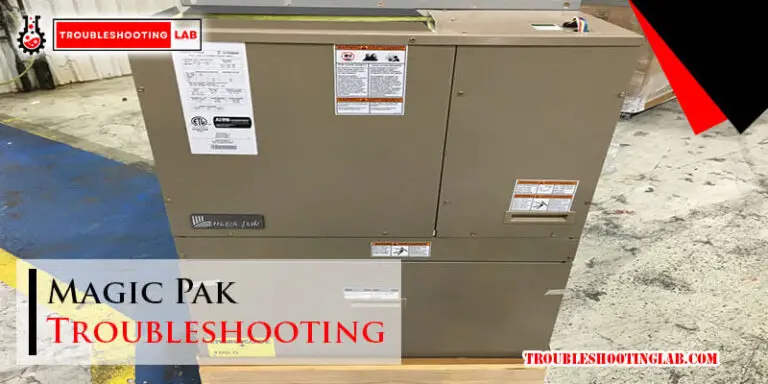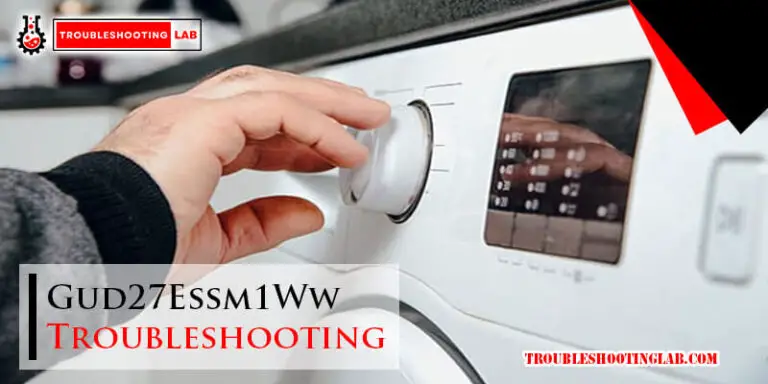Vizio Sound Bar Troubleshooting: Easy Fixes for Immersive Sound
Having issues with your Vizio sound bar? Start by checking the power connection and ensuring the device is properly plugged in and turned on.
If it’s still not working, try resetting or updating the sound bar’s firmware. In this guide, we’ll discuss common troubleshooting steps to help you resolve any issues you may be experiencing with your Vizio sound bar. Whether it’s a lack of sound, connectivity problems, or other issues, we’ll cover potential solutions to get your sound bar working perfectly in no time.
A Vizio sound bar can enhance your audio experience, but troubleshooting technical problems can be frustrating. Whether you’re dealing with sound issues, connectivity problems, or other concerns, this guide will help you navigate the troubleshooting process with ease. We’ll provide practical tips to resolve common issues and get your Vizio sound bar back to delivering high-quality sound.

Common Sound Bar Issues
If you are facing issues with your Vizio sound bar, it can be frustrating. Common problems such as no sound, low volume, and audio lag can impact your entertainment experience. Understanding these issues and their troubleshooting solutions can help you enjoy your sound bar to the fullest.
No Sound
If you are experiencing no sound from your Vizio sound bar, start by checking the connections. Ensure that the sound bar is properly connected to your TV or audio source using the correct cables. Additionally, check the volume levels on both the sound bar and the TV. If there is still no sound, try adjusting the audio settings on your TV to make sure the sound bar is selected as the primary audio output. If the issue persists, consider resetting the sound bar to its default settings.
Low Volume
When dealing with low volume on your Vizio sound bar, begin by checking the volume settings on the sound bar itself. Make sure the volume is not set to the minimum level or muted. Next, verify the audio output settings on your TV and ensure that the sound bar is receiving the appropriate signal. If the volume is still too low, examine the audio source’s output level and consider using a different source to identify if the issue is specific to one device. If needed, perform a power cycle by unplugging the sound bar for a few minutes before reconnecting it to troubleshoot low volume issues.
Audio Lag
Experiencing audio lag with your Vizio sound bar can disrupt the viewing experience. Begin by checking for any potential wireless interference or obstructions between the sound bar and the audio source. Ensure that the sound bar is within the recommended distance from the TV or connected device. Additionally, check for any firmware updates for your sound bar as updated software can address audio lag issues. If the problem persists, consider adjusting the audio settings on the connected device and the sound bar to reduce latency.
Basic Troubleshooting Steps
When your Vizio Sound Bar is not functioning properly, there are some basic troubleshooting steps you can take to resolve the issue. Follow these simple steps to address common problems and get your sound bar back up and running in no time.
Check Power Connection
- Ensure the power cord is securely plugged into both the sound bar and the power outlet.
- Confirm the power indicator light on the sound bar is illuminated.
- Try plugging the power cord into a different outlet to rule out a power supply issue.
Adjust Sound Settings
- Check the volume level on both the sound bar and your audio source.
- Ensure the sound bar is set to the correct input source for the audio you are trying to play.
- Reset the sound bar to its default settings to eliminate any custom configurations causing issues.
Connection Problems
If you’re experiencing connection issues with your Vizio soundbar, it could be due to HDMI or optical cable problems. These cables are essential for transmitting audio signals from your soundbar to your TV or other devices. Here are some troubleshooting steps you can take to resolve these issues:
- Check the Cable Connections: Make sure the HDMI or optical cable is securely connected to both the soundbar and your TV or other audio device. Sometimes, a loose connection can cause audio problems.
- Inspect the Cable: Examine the HDMI or optical cable for any signs of damage, such as frayed wires or bent connectors. If you notice any issues, replace the cable with a new one.
- Try Different Ports: If you’re using HDMI connections, try plugging the cable into a different HDMI port on your TV. Some TVs have specific HDMI ports designated for audio output, so make sure you’re using the correct one.
- Reset the Audio Settings: In some cases, incorrect audio settings on your TV or audio device can cause connection problems. Try resetting the audio settings to their default values and see if that resolves the issue.
If you’re having trouble connecting your Vizio soundbar to your device via Bluetooth, here are some troubleshooting tips:
- Ensure Bluetooth is Enabled: Check that Bluetooth is enabled on both your soundbar and the device you’re trying to connect to. If Bluetooth is turned off on either device, you won’t be able to establish a connection.
- Check for Interference: Bluetooth signals can be disrupted by other wireless devices or physical obstructions. Move your soundbar and the device closer to each other to minimize any interference.
- Pairing Process: Make sure you’re following the correct pairing process for your specific soundbar model. Consult the user manual for the proper steps to pair your soundbar with your device.
- Update Software: Check if there are any available software updates for your soundbar. Sometimes, outdated software can cause connectivity issues. Visit the Vizio website to download and install any available updates.
Remote Control Malfunctions
Remote control malfunctions are a common issue faced by many Vizio sound bar users. When your remote control stops working or becomes unresponsive, it can be frustrating, especially if you rely on it to control your sound bar. In this section, we will discuss two troubleshooting steps you can take to resolve remote control malfunctions: checking the battery and resetting the remote.
Battery Check
One of the first things to check when your Vizio sound bar remote control is not working is the battery. A weak or dead battery can cause the remote control to malfunction. Here’s how to perform a battery check:
- Remove the battery cover on the back of the remote control.
- Take out the battery and inspect it for any signs of damage or corrosion.
- If the battery looks fine, test it by replacing it with a new one.
- Make sure to insert the battery correctly, following the polarity markings.
- Replace the battery cover and try using the remote control again.
If the battery was the culprit, replacing it should resolve the remote control malfunction. However, if the issue persists, you may need to try resetting the remote control.
Resetting Remote
Resetting the remote control can sometimes fix any issues related to its functionality. Here’s how to reset your Vizio sound bar remote control:
- Remove the battery from the remote control.
- Press and hold the power button on the remote control for at least 5 seconds.
- Release the power button and reinstall the battery.
- Point the remote control towards the sound bar and test its functionality.
By following these steps, you can reset the remote control and hopefully resolve any malfunctions. If none of these troubleshooting steps work, it may be time to consider contacting Vizio customer support for further assistance.
Upgrades And Firmware Updates
When troubleshooting a Vizio soundbar, upgrades and firmware updates play a crucial role in optimizing performance. By ensuring your software is updated, you can resolve common issues and enhance audio quality.
Software Updates
Regular software updates are essential for improving the functionality and stability of your Vizio soundbar. Make sure to check for updates periodically to keep your device running smoothly.
Firmware Upgrade Process
Upgrading the firmware of your Vizio soundbar can often resolve technical problems and introduce new features. Let’s walk through the simple steps to perform a firmware upgrade:
- Access the Vizio support website.
- Download the latest firmware version for your soundbar model.
- Connect a USB drive to your computer and transfer the firmware file.
- Turn off the soundbar and insert the USB drive into the designated port.
- Follow the on-screen prompts to complete the upgrade process.
By following these steps, you can ensure your Vizio soundbar is up-to-date with the latest improvements and enhancements.
Vizio Support Resources
When it comes to troubleshooting your Vizio sound bar, having access to the right support resources can make a world of difference. Vizio provides a range of support options to assist you in resolving any issues you may encounter with your sound bar. Whether it’s online support tools or direct customer service, Vizio offers solutions to get your sound bar back up and running smoothly.
Online Support Tools
- 1. Vizio Support Website: A comprehensive online resource featuring troubleshooting guides, FAQs, and product manuals to help you diagnose and resolve common issues with your Vizio sound bar.
- 2. Community Forums: Engage with other Vizio users and seek advice from the Vizio community forums where you can find solutions to specific sound bar problems.
- 3. Live Chat Support: Instantly connect with Vizio support representatives via live chat to receive real-time assistance with your sound bar troubleshooting.
Contacting Customer Service
- 1. Phone Support: Reach out to Vizio’s customer service team by phone for personalized assistance with your sound bar issues. A support representative can guide you through troubleshooting steps or schedule a service appointment if necessary.
- 2. Email Support: Send an email to Vizio support detailing the issues you’re experiencing with your sound bar. A support agent will respond with tailored troubleshooting advice to address your concerns.
- 3. Social Media: Vizio also provides customer support through their official social media channels. Direct messages or comments can be used to seek assistance with sound bar troubleshooting.
Hardware Defects
When troubleshooting hardware defects with your Vizio sound bar, it’s essential to identify and address issues related to faulty speakers and physical damage. Hardware defects can hinder the performance of your sound bar, but with the right troubleshooting techniques, you can effectively pinpoint and resolve these problems. In this section, we will focus on diagnosing and troubleshooting hardware defects to ensure optimal sound bar functionality.
Faulty Speakers
Faulty speakers can significantly impact the audio quality of your Vizio sound bar. When troubleshooting this issue, start by checking the connections between the sound bar and the speakers. Ensure that all cables are securely plugged in and free from damage. Furthermore, examine the volume and balance settings to rule out any software-related issues that could mimic speaker defects.
If the audio issues persist, consider conducting a speaker test to identify the problematic unit. Vizio sound bars often come with built-in diagnostics tools that allow you to test each speaker individually. Refer to the user manual for instructions on how to access this feature. If a specific speaker consistently produces distorted or muffled sound during the test, it may require replacement.
Physical Damage Assessment
Physical damage can impair the functionality of your Vizio sound bar, leading to various issues such as audio distortion or connectivity problems. To assess physical damage, carefully inspect the exterior of the sound bar for any visible signs of impact or wear. Look for dents, cracks, or scratches that may indicate underlying damage.
Additionally, examine the input ports and control buttons for any signs of damage. Ensure that the ports are not obstructed by debris or bent, as this can hinder connectivity. If there are any visible damages, it’s crucial to address them promptly to prevent further deterioration of your sound bar’s performance.
Enhancing Sound Quality
Enhance sound quality with effective Vizio Sound Bar troubleshooting techniques. Resolve audio issues and optimize your listening experience without any hassle.
When it comes to enjoying a cinematic experience in the comfort of your own home, sound quality plays a crucial role. If you’re facing issues with your Vizio sound bar, there are a few troubleshooting steps you can take to enhance the sound quality and elevate your audio experience. In this section, we will explore two important aspects to consider: optimizing room acoustics and sound bar placement.
Optimizing Room Acoustics
Room acoustics can greatly impact the sound quality of your Vizio sound bar. To optimize the acoustics in your space, consider the following:
- Minimize reflective surfaces: Hard surfaces such as glass, tile, or hardwood floors can cause sound to bounce around and create unwanted echoes. Adding rugs, curtains, or acoustic panels can help absorb excess sound and improve overall clarity.
- Furniture placement: Rearranging furniture can make a noticeable difference in sound quality. Avoid placing furniture directly in front of or behind your sound bar, as this can block or muffle the audio. Ideally, position your seating area in the center of the room to create a balanced listening experience.
- Avoid overcrowding: Too much furniture or clutter in your listening area can negatively impact sound quality. Clearing out unnecessary items can help reduce unwanted vibrations and improve the overall audio performance of your sound bar.
Sound Bar Placement
Proper placement of your Vizio sound bar is crucial in achieving optimal sound quality. Follow these guidelines to ensure the best listening experience:
- Position the sound bar at ear level: Mounting your sound bar at ear level or placing it below the TV screen can help direct the sound towards the listener’s ears, enhancing clarity and detail.
- Avoid obstructions: Make sure there are no objects blocking the path between the sound bar and the listener. Obstructions, such as plants or decorations, can interfere with the sound waves and diminish the overall audio quality.
- Consider wall-mounting: If possible, wall-mounting your sound bar can help create an immersive audio experience. This placement option can provide better dispersion of sound and reduce reflections, resulting in enhanced sound quality.
By optimizing room acoustics and carefully considering the placement of your Vizio sound bar, you can enhance the sound quality, bringing the theater experience right into your living room. Implement these troubleshooting steps to unlock the full potential of your sound bar and enjoy immersive audio like never before!
Frequently Asked Questions For Vizio Sound Bar Troubleshooting
Why Is My Vizio Sound Bar Not Turning On?
If your Vizio sound bar is not turning on, check the power source, remote batteries, and connections. Ensure the power cord is securely plugged in and try resetting the sound bar. In case of persistent issues, contact Vizio customer support.
How Can I Improve The Sound Quality Of My Vizio Sound Bar?
To enhance the sound quality of your Vizio sound bar, ensure it is correctly positioned, adjust the audio settings, and update the firmware. Consider adding soundproofing materials to the room for better acoustics. Experiment with different EQ settings for optimal audio experience.
What Should I Do If My Vizio Sound Bar Is Producing Distorted Sound?
If your Vizio sound bar is producing distorted sound, first check the audio input source for issues. Ensure cables are connected properly and not damaged. Try resetting the sound bar and adjusting sound settings. If problems persist, seek assistance from Vizio support team.
Conclusion
For a seamless sound bar experience, follow these troubleshooting tips. Remember to check connections and settings first. If issues persist, contact Vizio support promptly. By troubleshooting methodically, you can enjoy optimal sound quality from your Vizio sound bar. Stay tuned for more tech tips!






